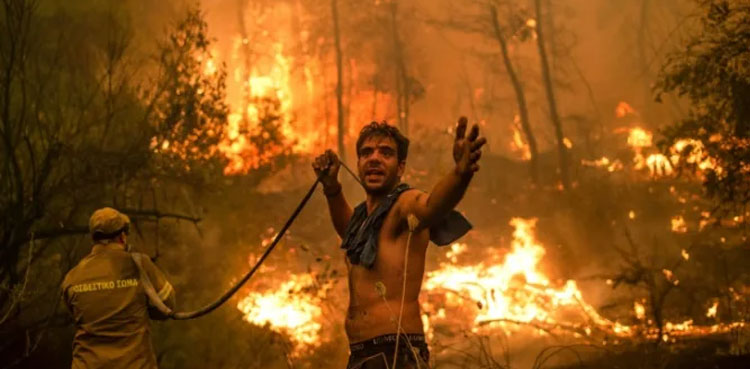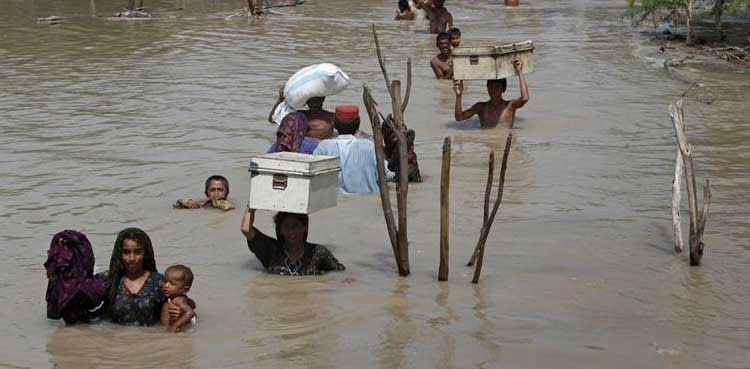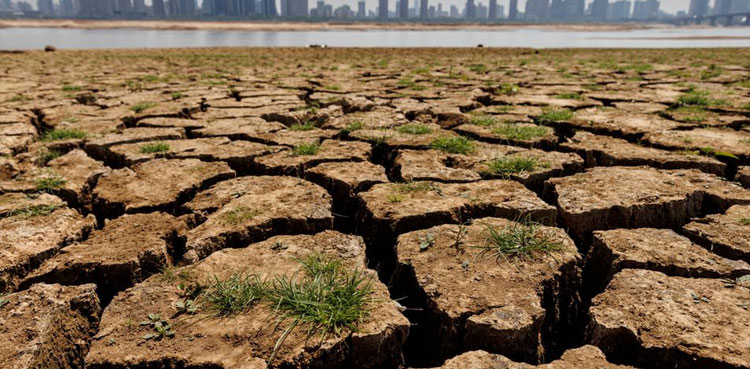
The fast-changing climate is a global issue that has put the world in a spin. Radical changes in climate conditions are now coming to a head with ever-increasing risks emerging with every coming year.
It is now very clear that in the past few years a deluge of extreme weather events and ecological disasters have been increasing alarmingly. The number of climate-related disasters has tripled in the last 30 years while the vast majority of weather events in the last five years have proven to be significant in influencing the process of climate change. There are many more events that have made it increasingly clear that habitats such as the Great Barrier Reef, the Arctic and the Amazon rainforest are on the brink of collapse.

There is panoply of events that are extremely worrying and the primary factor is that in the last seven years the world has witnessed are rated to be the hottest ever recorded on the planet. What is more, it is found out that 21 out of the 22 hottest years ever recorded had been since the millennium. It was also found that last year more than 400 weather stations across the globe had reported record-breaking heat, with 10 countries smashing national heat records and two continental records broken in Europe and Africa. Many meteorologists and climate scientists say that the extreme heat wave that hit North America in the summer, breaking records by up to 5°C (9°F) in places, was among the most alarming weather events of the year.
It is also made known that large sinkholes are becoming increasingly widespread in Turkiye with underground water levels dropping by more than six feet and seven inches in the past five years. As well as being linked to climate change, drought is worsened by urban sprawl and industrialisation, since the use of concrete and other non-porous materials limits how much water can be absorbed back into the ground. Climate scientists say that rising global temperatures led to the weakening of the jet stream – which usually keeps cold Arctic air in the Arctic – meaning that polar air was able to travel southwards to the US and resulted in the cold conditions.
The climate ravages are increasing by the day and it is widely predicted that the planet Earth is going to experience profound changes to its internal conditions in the future and that some of these changes have started to appear causing widespread jitters. An inevitable rise in sea levels imply that global warming is its cause and it is pointed out that the sea levels have risen by at least one meter during the 21st century. Many coastlines have already and will continue to be impacted around the world with irreversible consequences for coastal inhabitants. A warning issued by a futuristic research group mentioned that 300 million people could face annual floods by 2050.
In this context different scenarios are quoted that depend on the rise in sea level, the intensity of greenhouse gas emissions and how much the Antarctic ice sheet melts but 150 million people will live below sea level in all scenarios compared to 110 million today. While they are currently protected by dykes or mangroves, coastal inhabitants will have to build new developments or move away from the coasts. This uncomfortable fact shows that the race against time has already begun. By 2050, a million inhabitants in France alone could be impacted. In mainland France, a 50 centimeters rise in sea level is very likely to take place by 2080-2100, flooding a large portion of the coastline. The Channel and North Sea coasts would be hit hard particularly in Pas-de-Calais and Seine-Maritime.
It is also pointed out that the Atlantic coast is also in danger as it would not be spared either, especially in Charente-Maritime and Gironde. There are several possible coastal erosion solutions: developing the coast to monitor erosion, relocate populations towards Bordeaux, or maintaining the existing coastline with civil engineering projects. From northern France to western Denmark, and from the east coast of England to the Netherlands, rising sea levels will impact the North Sea coasts for decades to come. A significant portion of the Netherlands will have to be redeveloped in order to remain habitable and a massive effort would be required to achieve it. Venice, the magical Italian city famous for its canals will be at the forefront of the rising sea levels.
It is conjectured that Venice as is known now may disappear as the city is already facing a dilemma between keeping tourism revenue and preserving the city.
The South American Atlantic coast will also suffer the consequences of rising sea levels. French Guiana will be affected, as well as northeastern Brazil, Suriname and Venezuela. Further north, Cuba and the Bahamas will face the negative impacts of rising sea levels. Their sunny skies and sandy beaches are at a significant risk of disappearing which will impact their economies that are largely augmented by tourism. In the United States, there will be significant ramification for Southern coasts if nothing is done to curb global warming. The first victims will be Florida, a populous state that attracts millions of tourists annually and Louisiana, which has already been significantly impacted by Hurricane Katrina in 2005.
Mozambique will be the African country that is the most impacted by rising sea levels. The country has several major cities on the coast of the Indian Ocean. But Tanzania, Nigeria, Senegal, and Mauritania would not be spared either and may face difficult consequences of adverse climate conditions. The highly populated coasts on the Mediterranean sea will have to face the rising sea levels. The regions that will face the most impact are Andalusia in southern Spain, the Libyan coast and Alexandria and Port Said in Egypt.

As far as the Persian Gulf is concerned climate scientists have declared a gigantic area north of the Persian Gulf spanning thousands of kilometers between Iraq and Iran to be at risk for flooding. Future floods will undoubtedly lead to significant population displacements. East India, particularly near Calcutta and Bangladesh, undoubtedly faces the greatest risk.
Coastal areas of Pakistan may also face the brunt of coming ravages as hundreds of millions of people live in the area and an uncontrolled rise in sea level would have significant ramifications for the region and the rest of the world. Southeast Asia is also at risk as the densely populated coasts of Thailand, around the capital Bangkok, Vietnam around Hanoi and Ho-Chi-Minh-City, Malaysia and certain Indonesian islands will also face the consequences of rising sea levels.
Chinese coastlines are among the most threatened, especially around cities like Shanghai or Tianjin. Hundreds of millions of lives are at stake. The Chinese government will have to brace up to mitigate this risk. Several regions of North and South Korea and Japan are predicted to feel the impacts of rising sea levels, especially in the Japanese cities of Nagoya and Osaka. If rising temperatures seem irreversible in the short term, it makes it all more necessary and urgent to take action in order to limit global warming and its devastating effects. The clock has started to tick and the need for action is urgent. The Weekender
from Science and Technology News - Latest science and technology news https://ift.tt/g5jnzbu
via IFTTT
